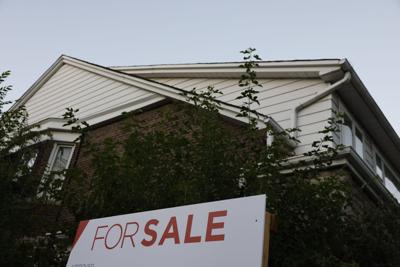While average home prices are still up since 2020, three of É«É«À²’s more affluent pockets have seen prices dip to below prepandemic levels. But that doesn’t mean you can get a good deal on a Forest Hill mansion, just yet.
June saw the largest annual home price decline in years as consumer confidence nosedives due to unpredictable economic ties with the U.S., and high housing and borrowing costs continue to push buyers on the sidelines.Â
But while the average home price in the GTA has dropped by more than 20 per cent since the February 2022 peak, it’s still around 30 per cent higher than 2019 levels.
All regions across the GTA saw price gains from June 2019 to June 2025 — except for three areas.
The area including Forest Hill South, Oakwood, Humewood and Corso Italia saw a 14 per cent price decline; the area including Cabbagetown, É«É«À² Waterfront, Church and Wellesley, and St. James Town saw a 0.1 per cent price decline; and the area including Don Mills, Parkwoods, and Victoria Village saw an 18 per cent price decline, according to data from the ɫɫÀ² Regional Real Estate Board (TRREB).
Overall, these regions — classified by TRREB as C03, C08 and C13, respectively — had fewer sales in 2025 compared to 2019 and a decrease in detached home sales with gains in condo sales, dragging down the average price.
Experts warn that the small number of sales in each neighbourhood can skew the home price averages, but noted that these neighbourhoods help illustrate a shift in how condos have come to dominate transactions over the last six years.
“There’s this broader theme of there being more purchases for condo apartments as the overall percentage total of homes south of the 401,” said Cameron Forbes, COO of Re/Max Realtron Realty Inc.
Sales tank from prepandemic times
All three neighbourhoods saw noticeable sale declines in June 2025 compared to the same month in 2019.Â
Real estate transactions have been low across the GTA since the Bank of Canada began its rate hike campaign in March 2022. Even with the rate cut cycle over the last year, buyers have remained on the sidelines, waiting for sticky prices to drop.Â
By the end of 2019, there were a total of 94,000 sales that year in the GTA, whereas in 2024 overall sales dropped to 70,000.Â
In Forest Hill South, Oakwood, Humewood region, there were 47 sales in June 2025 and 66 sales in June 2019 — a 28 per cent drop.Â
In Cabbagetown, É«É«À² waterfront, Church and Wellesley region, there were 141 sales in June 2025 and 189 sales in June 2019 — a 25 per cent drop.Â
And in Don Mills, Victoria Park region, there were 51 sales in June 2025 and 71 sales in June 2019 — a 28 per cent drop.
Less than 100 transactions can skew the average price for the area, experts said.
“When the volume of sales goes down, each sale becomes more meaningful on a percentage basis,” said Cailey Heaps, president and CEO of the Heaps Estrin Team real estate agency.
That means if there’s a luxury home that sells in the area it can skew the average price higher, or if there are fewer luxury home sales then the average price can drop significantly.Â
Condos change the supply landscape
Over the last six years, in Forest Hill South, Oakwood, Humewood region, detached home sales have taken a back seat as condo sales surged, said Forbes.
In June 2019, around 62 per cent of sales in the area were for detached homes, and in 2025 it dropped to just 40 per cent, he said.Â
“There are more condos in this area in 2025 compared to six years ago, and are a larger percentage of sales,” Forbes said.Â
In Cabbagetown, É«É«À² waterfront, Church and Wellesley area, condos accounted for 87 per cent of sales in June 2019, rising to 91 per cent in June 2025. That’s why it’s likely that overall price decline in the area remained relatively flat, he added, as condos are generally less expensive than lowrise homes, balancing out rising values.
And there’s also been a shift in the Don Mills, Victoria Park area, with newer condos coming online over the last five to 10 years, Forbes said.Â
Detached homes sales dropped from 33 to 14 sales over the six-year period, with condos now accounting for almost half of the sales in the area.Â
Looking forward, it’s hard to forecast if more neighbourhoods in the city will follow this trend, experts said.Â
The hope is that if the Bank of Canada continues to cut its key interest rate and Canada can secure a deal to ease economic uncertainty with the U.S., then we could see pent-up buyer demand enter the market.
“I do think we’ve bottomed out in terms of pricing,” said Heaps. “We’re in an environment where interest rates are improving and we’ll see consumer confidence grow.”






























To join the conversation set a first and last name in your user profile.
Sign in or register for free to join the Conversation